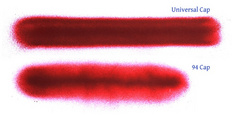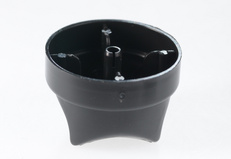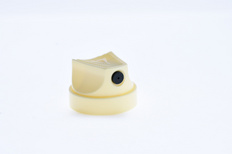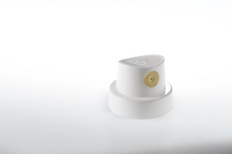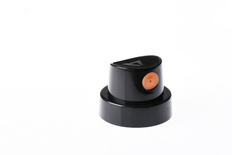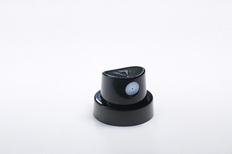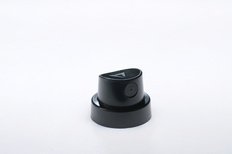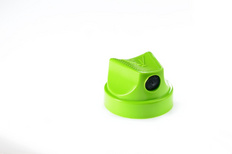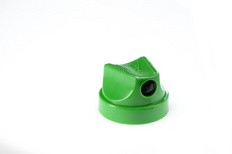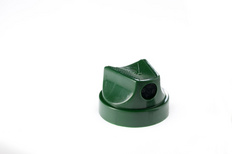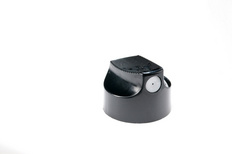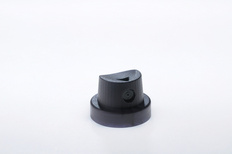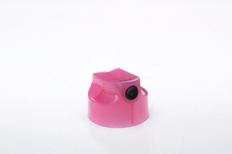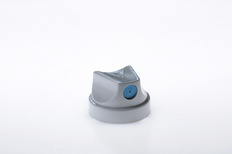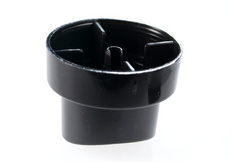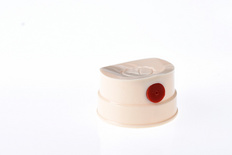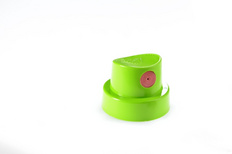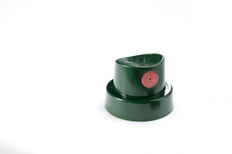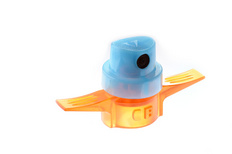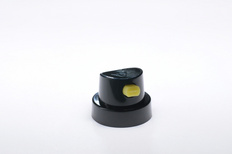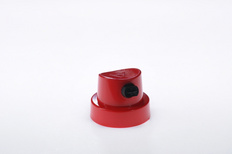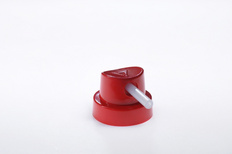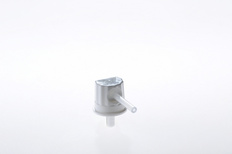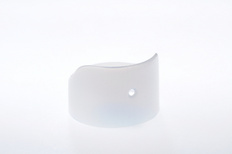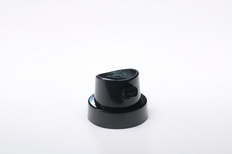
This is one of the most complete spray cap list online (to my knowledge). The second one was the Ultimate Graffiti Buyer’s Guide (original site offline since 2012). The descriptions refer to caps on 94 cans; Usually this is the same except for mtn HC cans which often produce a different dot pattern.
If you have a 3D printer, you can print my Spray Cap Holder.
Thanks layup for the caps!
For a can list see here.
April 2024: New caps finally tested! (Including the MTN Skinny Cream)
January 2018: CMC Jiffy, CMC Wally added. Again, thanks to Bombing Science for sending the caps!
Also added: Hardcore Medium, Hardcore Fat.
March 2017: Lego, Royal, Smoky, Wing Cap added (to be tested). Thanks to Bombing Science for the caps!
January 2016: Details about Skinny Gold/Grey/Black and Rusto Fat added.
August 2011: Several caps added. Beige Dot, NY Thin, Skinny Pro black/grey, golden cap (name unknown), Ironlak caps (Sharp Shooter, Widow Maker, Cyclone), Montana Germany caps (Level 1–6). Many descriptions added.
- Differences between caps
- Cap dots
- A note about temperature
- Thin Caps
- Standard Caps
- Soft Caps
- Fat Caps
- Special Caps
- Links
Differences between caps
What are the differences between different caps?
- Hardness
- When spraying a line, the edges can be very hard (e.g. with a Universal cap on ironlak), or they can fade out and look fuzzy. The caps that produce the softest lines are usually referred to as Softcap and have blue dots.
- Caps that produce hard lines are good for outlining. For hazes and shadings, softer caps are generally preferred.
- Size
- Spraying from the same distance with a NY Thin and a NY Fat will result in a much wider dot for the NY Fat. This also defines the minimum width of a line.
- Caps which produce wide dots are called Fat Caps.
- Reaction time
- The Skinny Pro reacts quickly: When you stop spraying, the paint stops flowing. This does not necessarily need to be the case; The Super Skinny Gold, for example, continues expelling paint for half a second or so.
- Dot pattern
- The dot pattern is the pattern that is produced when spraying on a single point from medium distance. Most caps show a circle with a dot in the center (the NY Fat is a very beautiful example for this). Other caps, like the Astro Fat, rather produce rectangles with a dot in the center, and some few like the 94 cap have no outer circle at all.
- Consistency
- Or Quality. For some caps you can grab a handful and every cap will produce a slightly different pattern (see the video about the alternative Banana Yellow linked in its description). Others always look the same. Consistency may be important if you rely on the pattern, e.g. for visual effects.[1]
- Compatibility
- Some caps only work on certain cans. More precisely: Some caps only worked on the original mtn Hardcore (not the current Hardcore 2) which is not available anymore. Note that only the brands in the can list have beend tested; I guess these caps work on Rustoleum as well. These are highlighted in the list below. The reason is the stem diameter; For ordinary caps it is around 3.3 mm, whereas the “incompatible” caps are at 3.5 mm.[2]
- Availability
- Caps, as well as some manufacturers, come and go. No longer available caps are highlighted too.
Cap dots
My new 2024 hobby: Opening them

The dot is where paint exits after entering the cap through the slit and following the internal path to the dot. What happens in the dot is that paint is guided by the (usually four) furrows from the outside to the center where leaves the cap through the hole in the dot.
The furrows are not pointing directly to the opening in the middle, instead they „miss“ it, which causes paint to rotate in a controlled manner before it shoots out, a bit like in a tornado.
This rotation helps to reach an even, circular output pattern. If the lines were straight, the paint would move rather randomly before exiting, causing an inpredictable output pattern.
Most dots are either the first two versions (fat caps) or the second two versions (thin caps). The only different cap I opened so far is the mtn Skinny Cream with 3 instead of 4 furrows, which I liked because it reminds of the mtn logo -- but this may be coincidence.
Given the low variability in dots, I wonder whether most caps mostly differ in colour and not in actual behaviour, as many of them feel quite identical.
A note about temperature
Say hello to Winter
It is not just for fun that manufracturers give a minimum operating temperature. Lower temperature has several effects:
- Less pressure in the can. (See the ideal gas law from thermodynamics.) Especially for low-pressure cans this is a problem as they start clogging quickly.
- Paint dries slowly. In fact, very slowly; Some solvents take ages to evaporate.
- Evaporation takes energy. As standing in the wind after taking a bath. This reduces the surface temperature even further. A similar effect can be observed with fat caps when spraying large areas; the can cools down because the pressure sinks (again, the ideal gas law).
Therefore two hints when spraying with low-pressure cans in low temperatures:
- Thin layers only. If it takes two thin layers of paint 1 minutes each for drying, one thick layer is still wet after 10 minutes.
- Forget about thin caps. At least on the 94 can, which is made for summerly temperatures (remember – they are built in Spain). The caps clog even before you mount them on the can. Use fat caps only. Molotow cans have less problems here due to the fine pigment, high-pressure cans like the Hardcore have enough pressure.
Thin Caps
Produce very thin lines
These thin or skinny caps produce fine lines and are mainly made for detail work. The disadvantage is that they clog quicker that fatter caps (especially if the can was not shaken well enough before).
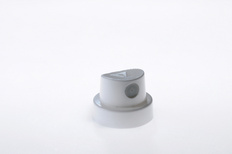
- Grey Dot
aka. Super Skinny #2. Skinniest cap, allows thin lines even with sabotaz cans. Slightly thinner than the Gold Dot, but slightly higher reaction time.
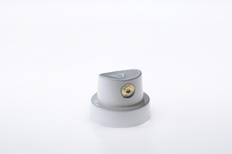
- Super Skinny gold
Not to be confused with the Outline Special Gold. This cap has a hole in the transparent stem, the Outline Special a normal slit in white plastic.
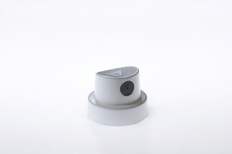
- Black Dot
Compared to Grey and Gold to the left, the Black Dot has higher output, is slightly thicker and better for outlines, but worse for shading.
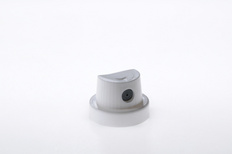
- Normal Cap
mtn Hardcore only. Very thin line even from huge distances. Also e.g. on the mtn Solvent.
Like a garden hose with centered jet of water.
Standard Caps
General purpose, for filling and outlining
Most caps have a medium line width. The difference between them is sometimes so small that it is hardly even recognizeable.
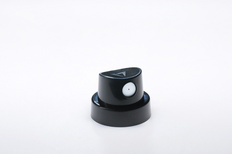
- Covers-All
for molotow CoversAll cans. Are said not to clog.
Compare the sign to distinguish the Covers-All from the Pocket Cap (no dot at the tip).

- NY Thin
Classic cap. Similar dot pattern as the NY Fat, and also has two output modes (circle is not visible in low output mode).
Compared to the NY Fat the NY Thin has finer ridges and the dot is not sunk in.
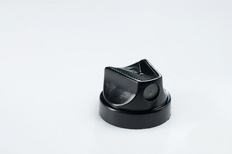
- Skinny Pro black/grey
Also called MOLOTOW Skinny.
Rectangle/circle around the dot is always visible in contrast to the black/black where it disappears in low output mode.
On mtn Hardcore: Like a NY fat, 10 cm wide.
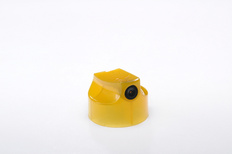
- Universal
Suits on virtually every can. Quite sharp lines. See the Universal Cap on vimeo.
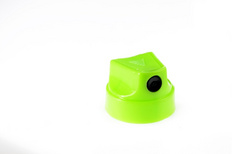
- Sharp shooter
Ironlak cap. Consistent width independent of distance. Has two output modes, like a fat cap: On low it produces hard, narrow lines, on high (cap pressed down completely) the dot pattern is similar to the 94 pattern. Expels more paint however. Good for fast outlines, but edges are splashy.
Not to be confused with the Level 1 cap. Sharp shooter has a cooler pastel green and Level 1 is brighter like a green text marker.
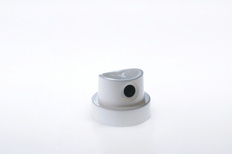
- No idea what this is, please tell me.
Makes thin to fat lines (two output modes like a fat cap), width 1–5 cm.
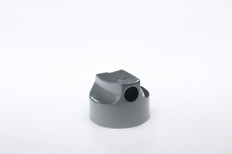
- Banana Grey
Similar to the Banana Yellow, but works on all cans. Produces a soft dot only with a faint circle. Wider than the Banana Yellow (2–3 cm).
On Vimeo.
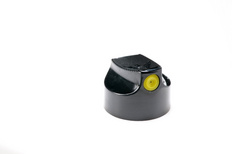
- Banana Yellow
Comes on mtn Hardcore cans.
Hard lines, 1–2 cm wide. The circle has about the same strength as the dot.
Banana Yellow on vimeo.
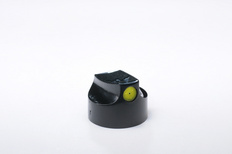
- Alternative Banana Yellow. Irregular and random dot patterns. No indent in the yellow dot (inlay).
See the Alternative Banana Yellow on vimeo.
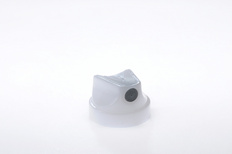
- 94 Cap
For mtn 94. Lines are softer than Universal lines. See the 94 Cap on vimeo.
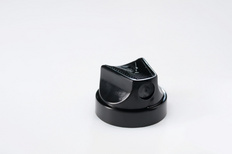
- Skinny Pro black/black
e.g. on the mtn Alien; Fatter than the 94 cap, but slightly faster reaction time. Slightly harder than the Skinny Pro black/grey. Thin lines are fatter at the first moment of spraying. Circle around the dot becomes wider when the cap is pressed down completely.
On mtn Hardcore: Like a NY thin (wide circle when pressed down completely).
On German Montana: Very fuzzy line.
See the Skinny Pro on vimeo.
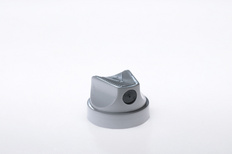
- Skinny Pro Grey
Partially a soft cap, but still with a strong dot. Circle is always visible. Dusty when spraying.
On mtn Hardcore: Soft and fat.
Soft Caps
Sharp lines? Fotget about this
For stencils, highlights, and other effects
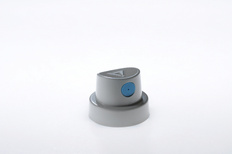
- Softcap grey round
Produces regular dot patterns and soft fadings. Shading is possible without the dot being visible.
See this Softcap on vimeo.
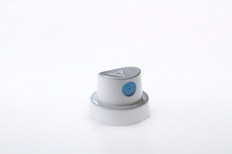
- Softcap white
On Molotow Premium
Least dusty and softest of all blue dots. Dot pattern shows a soft hexagon.
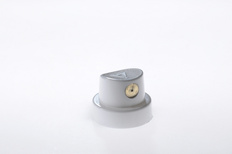
- Outline Special Gold
No idea why it is called outline. Ideal if you want to have your spray paint atomized in the air, not on the wall. Air humidifiers will work perfectly with this cap.
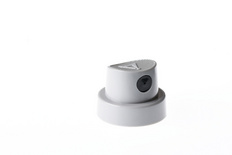
- Smoky Skinny
As the name says, the line it produces does look smoky due to its randomness, which can produce nice effects. When painting at an angle to the wall, a sharp line will appear on the closer side, so use perpendicular to the wall for haze effect only.
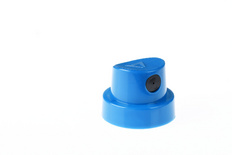
- Royal Soft
Medium (almost fat) output, produces a center dot with a soft and well-rounded square around it, the square only appears at higher pressure (as with most fat caps)
Fat Caps
Fill quickly
Ideal for filling large areas.
Most fat caps have two «modes» and produce a narrow line when only pressed down carefully (low output mode) and a wider one when pressed down completely (high output mode). But not all – Ironlak’s NY Fat has no difference.
See Pink Dot, Astro Fat, and Silver Super Fat on vimeo.
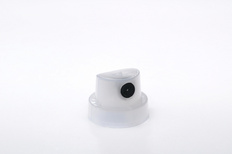
- Astro Fat
Very clean cap, does not drip. Strong circle (therefore not ideal for haze effects). Sharp lines in low output mode.
Ideal for filling large areas due to the high output.
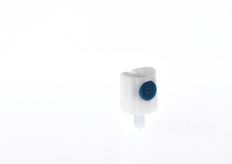
- CMC Wally
Medium output. Produces a strong center with a soft circle around it which disappears when spraying at slightly longer distances (because it is carried away and does not make it to the wall).
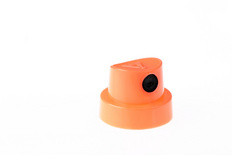
- Hardcore Fat
Cap by mtn. Produces an evenly filled pentagon pattern with a dot in the middle, still soft enough for smooth transitions. I like it.

- Pocket Fat
Produces a dot of constant width, also at higher distance, which keeps stencil borders sharper.
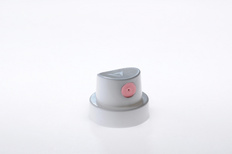
- Pink Dot white
aka. Super Fat White/Pink. Produces a pentagon dot pattern with a strong center (not for filling). Medium output and narrow line (for a fat cap) also at larger distance to the wall. No big difference between low/high output mode.
This cap proved ideal for soft gradients.
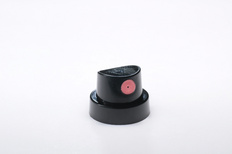
- Pink Dot black
High output. Irregular dot pattern, but very clean gradient for shadow effects.
Fuzzy line with some larger sparkles in low output mode. High output mode good for haze effects.
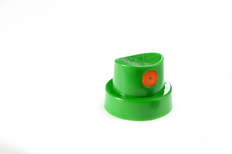
- Montana level 5
Like a fat 94 cap in low output mode, in high output mode the circle becomes visible.
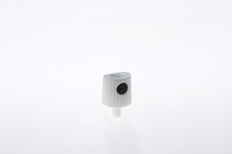
- NY Fat
aka. New York Fat.
Lightest fat cap here. Conical pattern with a strong center on the 94 can.
See the NY Fat on vimeo.
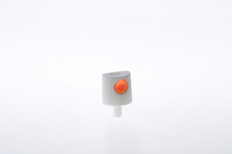
- Rusto Fat
From Rustoleum. Softer than NY fat on most brands. See the Rusto Fat on vimeo.
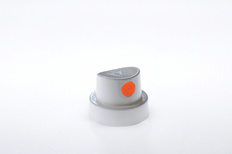
- silentFat
Sometimes irregular dot pattern, but produces sharp lines when working close to the wall. (Not really useful otherwise.)
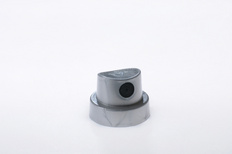
- Super Fat silver
High output. Square dot pattern. Only small difference between low/high output mode.
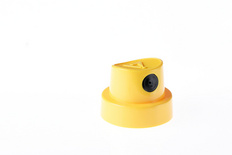
- Sabotaz Ultra Fat
Also known as Clash Fat. Wide, irregular circle around the dot. Sounds like an Astro Fat and can be controlled quite well. Drips.
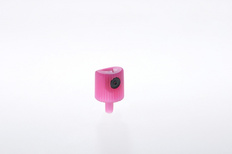
- NY Fat Ironlak
Center only, no circle, kind of a fat 94 cap. Medium output. No difference between low/high output. Produces fuzzy lines.
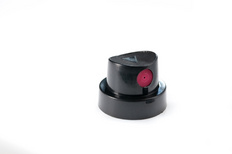
- Widow maker
Good for soft shadows. Low output mode: Only a soft dot without a circle. High output mode: Circle becomes visible, but is still weak compared to the dot.
Not to be confused with the Pink Dot black.

- Cyclone
High output. This cap is only on or off and drips a bit. Low output mode is hard to achieve.
The hexagon around the dot is strong and relatively close to the dot.
Special Caps
Because they are different
Calligraphy caps produce a pattern that is much higher than wide – like a calligraphy pen.
The stencil cap is for very thin lines. Absolutely use a thin outline cap on it since the rest of the paint will just be kept back by the stencil cap. With a fat cap you will have a sea of paint there in no time.
Needle Caps are good for … what? They expel too much paint for working closely, and the line looks like paint splashed on the wall otherwise.
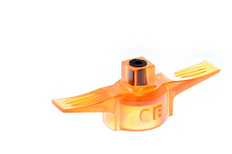
- Wing Cap (not tested yet)
Accepts all caps and works on male cans (European cans are female!). Use two and more fingers for spraying.
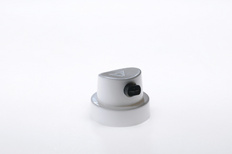
- Transversal
aka. White Calligraphy. See the Transversal on vimeo.
Links
and references
Cap lists:
- Caps on Molotow.com and sorted by type in the molotow shop
- Caps on montanacolors.com and on mtncolors.com (Also see the Cap Recommendations for their cans)
- Caps on German Montana
References and more:
- ^ Annotation: I often work with mtn 94. They are quite consistent; however, a low percentage (perhaps two amongst 100) are «bad». One cap I recently had produced a pattern similar to the one from a calligraphy cap.
- ^ On current cans, the hole only accepts stem diameters of 3.3 mm. Original Hardcore cans have larger holes, which might also be the reason why they sometimes leak with the normal caps.
